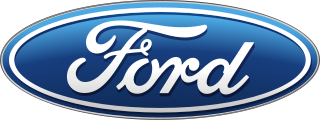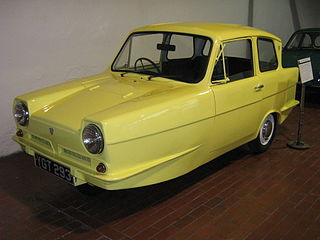This article relies largely or entirely on a single source .(March 2019) |
Diva was a British manufacturer of sports cars from 1961 to 1966. It was a subsidiary of the Tunex Conversions Co set up by Don Sim in Camberwell, London, but in 1966 Diva Cars Limited became its registered name. In 1967, after car production ceased, the name changed again to Skodek Engineering.

A sports car, or sportscar, is a small, usually two-seater automobile designed for spirited performance and nimble handling. The term "sports car" was used in The Times, London in 1919. According to the Merriam-Webster dictionary, USA's first known use of the term was in 1928. Sports cars started to become popular during the 1920s.

Camberwell is a district of South London, England, within the London Borough of Southwark. It is located 2.7 miles (4.3 km) southeast of Charing Cross. The name Camberwell was first applied to the Parish of St Giles, Camberwell, which included Camberwell, Peckham, Dulwich, Nunhead, and part of Herne Hill. Until 1889, it was part of the county of Surrey. In 1900 the original parish became the Metropolitan Borough of Camberwell.
Contents
The first Diva was intended to demonstrate Tunex's technology and had a body built by Heron Plastics and was a development of their 750 model. The car was raced successfully and another was built with larger windscreen and called the B-Type. Demand grew from enthusiasts for more of them so a "production" version of the GT was developed.
In 1960 Heron Plastics of Greenwich, London was well established as a manufacturer of GRP bodyshells for Austin 7 specials. One of these was used as the basis for the original Diva GT in 1961. By this time, Heron also built their own coupe, the Europa, although they did not debut it until the 1962 Racing Car Show.
The 1963 Diva GT or C-Type had a fibreglass body and spaceframe chassis and could be built with a range of Ford engines ranging from 998 to 1650 cc. Suspension was independent all round and disc brakes were fitted at the front. The car was designed for track use only. Thirteen were built, but one only was registered for the road: the Diva GT C Type registered ACD 305B. This car won Best Car at the Southern Kit Car Meeting held at Hindhead on 17 September 1978 for its owner Steve Pethybridge. The car is currently in Germany.

Ford of Britain is a British wholly owned subsidiary of Blue Oval Holdings, itself a subsidiary of Ford International Capital LLC, which is a subsidiary of Ford Motor Company. Its business started in 1909 and has its registered office in Brentwood, Essex. It adopted the name of Ford of Britain in 1960.

Hindhead is a village in Surrey, England. It is the highest village in Surrey, with buildings at between 185 and 253 metres above sea level. It is best known as the location of the Devil's Punch Bowl, a beauty spot and site of special scientific interest, and as the site of the Hindhead crossroads, a formerly notorious congestion spot, where the A3 between Portsmouth and London was crossed by the A287 between Hook and Haslemere. The A3 now passes under Hindhead in the Hindhead Tunnel and its route along the Punch Bowl has been removed and landscaped, but the crossroads still exists for local traffic.
The 1965 D-Type had a longer nose and headlights so road use was possible. Fifty one were made.
A mid-engined Diva, the Demon, was exhibited at the 1965 Racing Car Show in London using a mid-mounted Hillman Imp engine. This was changed later in the year for a Ford 1500 cc unit and the car was launched as the Valkyr. Six were made including the prototype.

The Hillman Imp is a small economy car made by the Rootes Group and its successor Chrysler Europe from 1963 until 1976. Revealed on 3 May 1963, after much advance publicity, it was the first British mass-produced car with the engine block and cylinder head cast in aluminium.
The only car designed specifically for road rather than racing was the 10F, a version of the GT which used thicker fibreglass bodywork and a flexibly mounted engine. As some road going GTs were also called 10Fs the actual number made in uncertain but would seem to be less than ten.
Production of cars had stopped by 1967 when the rights to the model were sold to a new owner.














